| Member
|
Party
|
Term
|
Cong
ress
|
Electoral history
|
Location
|
| District created
|
March 4, 1823
|
| Henry Hosford Gurley
|
Adams-Clay Democratic-Republican
|
March 4, 1823 –
March 3, 1825
|
18th
19th
20th
21st
|
Elected in 1822.
Re-elected in 1824.
Re-elected in 1826.
[data missing]
|
1823–1833
East Baton Rouge, Feliciana, Iberville, West Baton Rouge, Pointe Coupee, Saint Helena, Saint Tammany, and Washington parishes
|
| Anti-Jacksonian
|
March 4, 1825 –
March 3, 1831
|

Philemon Thomas
|
Jacksonian
|
March 4, 1831 –
March 3, 1835
|
22nd
23rd
|
[data missing]
|
1833–1843
[data missing]
|

Eleazer Wheelock Ripley
|
Jacksonian
|
March 4, 1835 –
March 3, 1837
|
24th
25th
|
[data missing]
|
| Democratic
|
March 4, 1837 –
March 3, 1839
|
| Thomas Withers Chinn
|
Whig
|
March 4, 1839 –
March 3, 1841
|
26th
|
[data missing]
|

John Bennett Dawson
|
Democratic
|
March 4, 1841 –
March 3, 1843
|
27th
|
Redistricted to the 3rd district.
|
| Alcée Louis la Branche
|
Democratic
|
March 4, 1843 –
March 3, 1845
|
28th
|
[data missing]
|
1843–1853
[data missing]
|
| Bannon Goforth Thibodeaux
|
Democratic
|
March 4, 1845 –
March 3, 1849
|
29th
30th
|
[data missing]
|
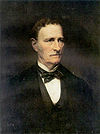
Charles Magill Conrad
|
Whig
|
March 4, 1849 –
August 17, 1850
|
31st
|
[data missing]
Resigned to become United States Secretary of War
|
| Vacant
|
August 17, 1850 –
December 5, 1850
|

Henry Adams Bullard
|
Whig
|
December 5, 1850 –
March 3, 1851
|
Elected to finish Conrad's term.
[data missing]
|
| Joseph Aristide Landry
|
Whig
|
March 4, 1851 –
March 3, 1853
|
32nd
|
[data missing]
|
| Theodore Gaillard Hunt
|
Whig
|
March 4, 1853 –
March 3, 1855
|
33rd
|
[data missing]
|
1853–1863
[data missing]
|

Miles Taylor
|
Democratic
|
March 4, 1855 –
February 5, 1861
|
34th
35th
36th
|
Withdrew due to onset of Civil War
|
| Vacant
|
February 5, 1861 –
December 3, 1862
|
36th
37th
|
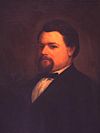
Michael Hahn
|
Unionist
|
December 3, 1862 –
March 3, 1863
|
37th
|
[data missing]
|
| Vacant
|
March 4, 1863–
July 18, 1868
|
38th
39th
40th
|
U.S. Civil War and Reconstruction era
|
| James Mann
|
Democratic
|
July 18, 1868 –
August 26, 1868
|
40th
|
[data missing]
Died.
|
| Vacant
|
August 26, 1868 –
March 3, 1869
|
House left seat vacant due to election dispute
|

Lionel Allen Sheldon
|
Republican
|
March 4, 1869 –
March 3, 1875
|
41st
42nd
43rd
|
[data missing]
Lost re-election.
|

Ezekiel John Ellis
|
Democratic
|
March 4, 1875 –
March 3, 1885
|
44th
45th
46th
47th
48th
|
[data missing]
Retired.
|

Michael Hahn
|
Republican
|
March 3, 1885 –
March 15, 1886
|
49th
|
[data missing]
Died.
|
| Vacant
|
March 15, 1886 –
December 9, 1886
|
| Nathaniel Dick Wallace
|
Democratic
|
December 9, 1886 –
March 3, 1887
|
Elected to finish Hahn's term.
[data missing]
|
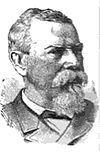
Matthew Diamond Lagan
|
Democratic
|
March 4, 1887 –
March 3, 1889
|
50th
|
[data missing]
|

Hamilton D. Coleman
|
Republican
|
March 4, 1889 –
March 3, 1891
|
51st
|
[data missing]
|

Matthew Diamond Lagan
|
Democratic
|
March 4, 1891 –
March 3, 1893
|
52nd
|
[data missing]
|
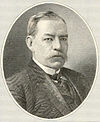
Robert Charles Davey
|
Democratic
|
March 4, 1893 –
March 3, 1895
|
53rd
|
[data missing]
|

Charles Francis Buck
|
Democratic
|
March 4, 1895 –
March 3, 1897
|
54th
|
[data missing]
|

Robert Charles Davey
|
Democratic
|
March 4, 1897 –
December 26, 1908
|
55th
56th
57th
58th
59th
60th
|
[data missing]
Died.
|
| Vacant
|
December 26, 1908 –
March 30, 1909
|
60th
61st
|
| Samuel Louis Gilmore
|
Democratic
|
March 30, 1909 –
July 18, 1910
|
61st
|
Elected to finish Davey's term.
Died.
|
| Vacant
|
July 18, 1910 –
November 8, 1910
|
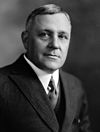
H. Garland Dupré
|
Democratic
|
November 8, 1910 –
February 21, 1924
|
61st
62nd
63rd
64th
65th
66th
67th
68th
|
Elected to finish Gilmore's term.
Died.
|
| Vacant
|
February 21, 1924 –
April 22, 1924
|
68th
|
| James Z. Spearing
|
Democratic
|
April 22, 1924 –
March 3, 1931
|
68th
69th
70th
71st
|
Elected to finish Deupré's term.
[data missing]
|

Paul H. Maloney
|
Democratic
|
March 4, 1931 –
December 15, 1940
|
72nd
73rd
74th
75th
76th
|
[data missing]
Resigned.
|
| Vacant
|
December 15, 1940 –
January 3, 1941
|
76th
|

Hale Boggs
|
Democratic
|
January 3, 1941 –
January 3, 1943
|
77th
|
[data missing]
Lost renomination.
|

Paul H. Maloney
|
Democratic
|
January 3, 1943 –
January 3, 1947
|
78th
79th
|
[data missing]
Retired.
|

Hale Boggs
|
Democratic
|
January 3, 1947 –
January 3, 1973
|
80th
81st
82nd
83rd
84th
85th
86th
87th
88th
89th
90th
91st
92nd
|
Presumed dead after private plane went missing over Alaska October 16, 1972. Seat declared vacant at beginning of the 93rd Congress.
|
| Vacant
|
January 3, 1973 –
March 20, 1973
|
93rd
|
|
1973–1983
[data missing]
|

Lindy Boggs
|
Democratic
|
March 20, 1973 –
January 3, 1991
|
93rd
94th
95th
96th
97th
98th
99th
100th
101st
|
Elected to finish her husband's term.
Retired.
|
1983–1993
[data missing]
|

William J. Jefferson
|
Democratic
|
January 3, 1991 –
January 3, 2009
|
102nd
103rd
104th
105th
106th
107th
108th
109th
110th
|
[data missing]
Lost re-election.
|
1993–2003
[data missing]
|
2003–2013

|

Joseph Cao
|
Republican
|
January 3, 2009 –
January 3, 2011
|
111th
|
Elected in 2008.
Lost re-election.
|
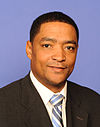
Cedric Richmond
|
Democratic
|
January 3, 2011 –
present
|
112th
113th
114th
115th
116th
117th
118th
|
Elected in 2010.
|
2013–present

|























